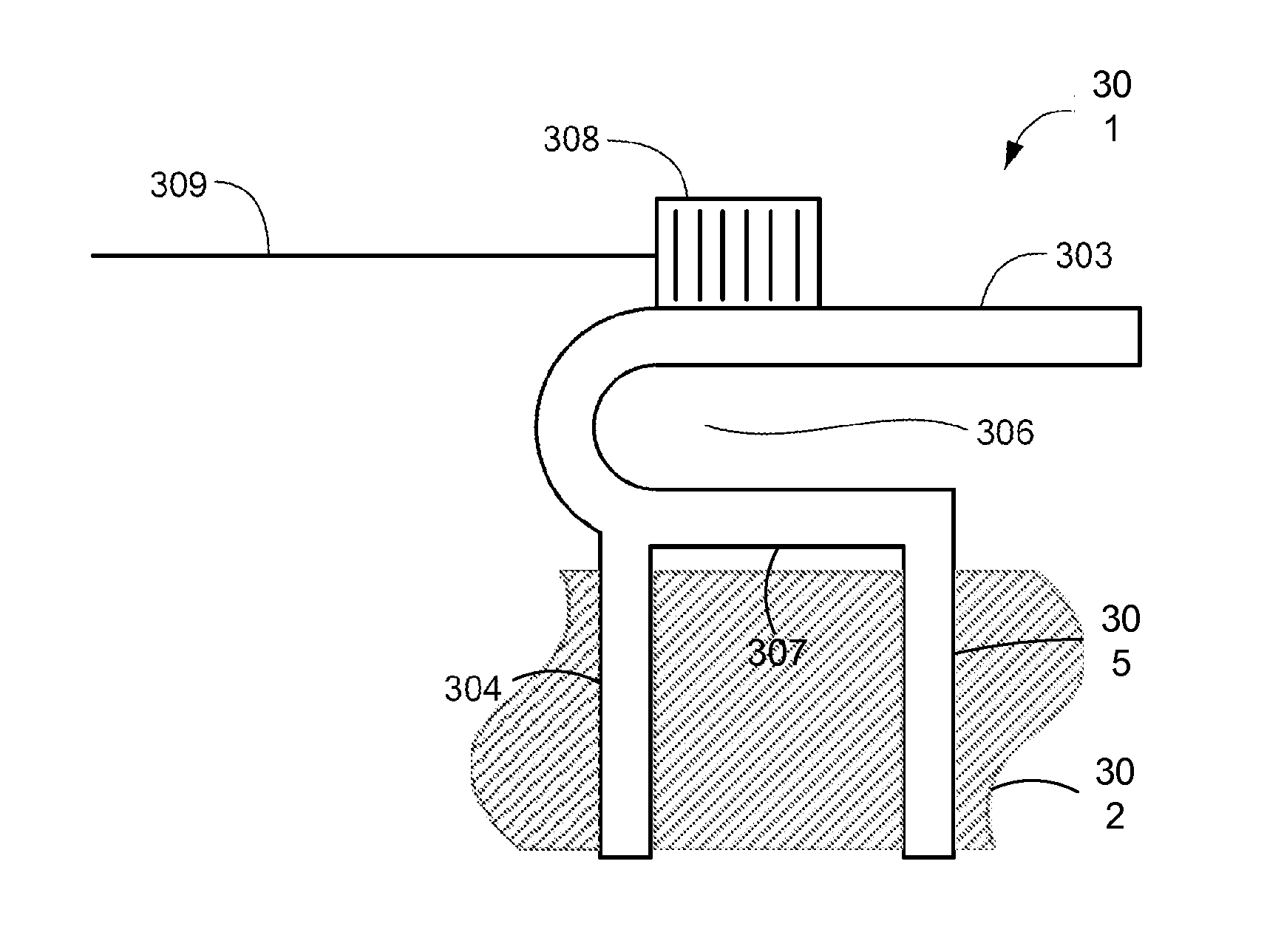Middle ear fixation structure
a technology of fixation structure and middle ear, which is applied in the field of middle ear fixation structure and implantable fixation structure, can solve the problems of lack of detailed description of the fixation and/or mounting of such implantable devices
- Summary
- Abstract
- Description
- Claims
- Application Information
AI Technical Summary
Benefits of technology
Problems solved by technology
Method used
Image
Examples
Embodiment Construction
[0024]One problem with fitting young children (as well as some adults) with cochlear implants is the difficulty measuring a comfortable level of response to the electric stimulation. Such persons may not be able to verbally or otherwise express what is a tolerable level of electric stimulation. With respect to such electrical stimulation, electrical potentials may be developed by a sensor which measures contractions and other movements of the stapedius muscle or tendon in the middle ear, and such signals are related to the comfort level of electric stimulation for that person.
[0025]Recording an electrically evoked stapedius reflex threshold (ESRT) may allow the objective fitting of the cochlear implant. Recording the ESRT begins by placing a sensing electrode or other sensor onto the stapedius muscle or tendon. The sensing device should be small and adapted to the size of the muscle or tendon. But, after a stimulating electrode has been inserted into the cochlea, it is difficult to ...
PUM
 Login to View More
Login to View More Abstract
Description
Claims
Application Information
 Login to View More
Login to View More - R&D
- Intellectual Property
- Life Sciences
- Materials
- Tech Scout
- Unparalleled Data Quality
- Higher Quality Content
- 60% Fewer Hallucinations
Browse by: Latest US Patents, China's latest patents, Technical Efficacy Thesaurus, Application Domain, Technology Topic, Popular Technical Reports.
© 2025 PatSnap. All rights reserved.Legal|Privacy policy|Modern Slavery Act Transparency Statement|Sitemap|About US| Contact US: help@patsnap.com



